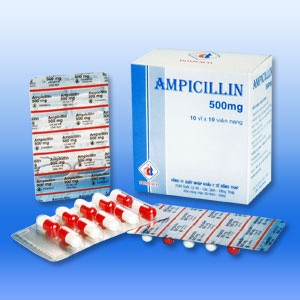
Ampicillin is an antibiotic used to prevent and treat a number of bacterial infections, such as respiratory tract infections, urinary tract infections, meningitis, salmonellosis, and endocarditis. More
Ampicillin is an antibiotic used to prevent and treat a number of bacterial infections, such as respiratory tract infections, urinary tract infections, meningitis, salmonellosis, and endocarditis.
Ampicillin
Ampicillin, Aminobenzylpenicillin, Amcill, Ampicillin acid, Ampicilline
ADC, Bacipen, Albercilin, Baxin-D, Alcilox, Baxin-D-LB, Alfacillin, Biocilin, Amklok, Broacil, Ampibact-D, Ampicillin, Broadicilin, Ampicillin Inj, Dynacil, Ampijet, Ampilin, Ampilin Tab, Amsat, Ampilox, Ampimax, JP-Cilin,
(2S,5R,6R)-6-[(2R)-2-amino-2-phenylacetamido]-3,3-dimethyl-7-oxo-4-thia-1-azabicyclo[3.2.0]heptane-2-carboxylic acid
It is a penicillin beta-lactam antibiotic used in the treatment of bacterial infections usually caused by gram-positive, susceptible, organisms. By binding to specific penicillin-binding proteins (PBPs) located inside the bacterial cell wall, this inhibits the 3rd and last stage of bacterial cell wall synthesis.
The recommended dose range is 0.5 to 3g every 6 hours/4 times a day.
Route of administration: IV/PO/IM
Respiratory infection, UTI, GI, and meningitis due to E. coli, enterococci, P. mirabilis, Shigella, S. typhosa and other Salmonella, nonpenicillinase-producing N. gononhoeae, H. influenzae, staphylococci, streptococci including streptoc
Anaphylactic shock; pseudomembranous colitis; neuromuscular hypersensitivity; electrolyte imbalance. GI upset, vomiting, nausea, diarrhoea; urticaria, blood dyscrasias; seizures; exfoliative dermatitis, rash; fever, interstitial nephritis.
Store at 20-25°C.
349.405
C16H19N3O4S
69-53-4
Renal failure; patients with lymphatic leukemia or HIV infections; pregnancy and lactation